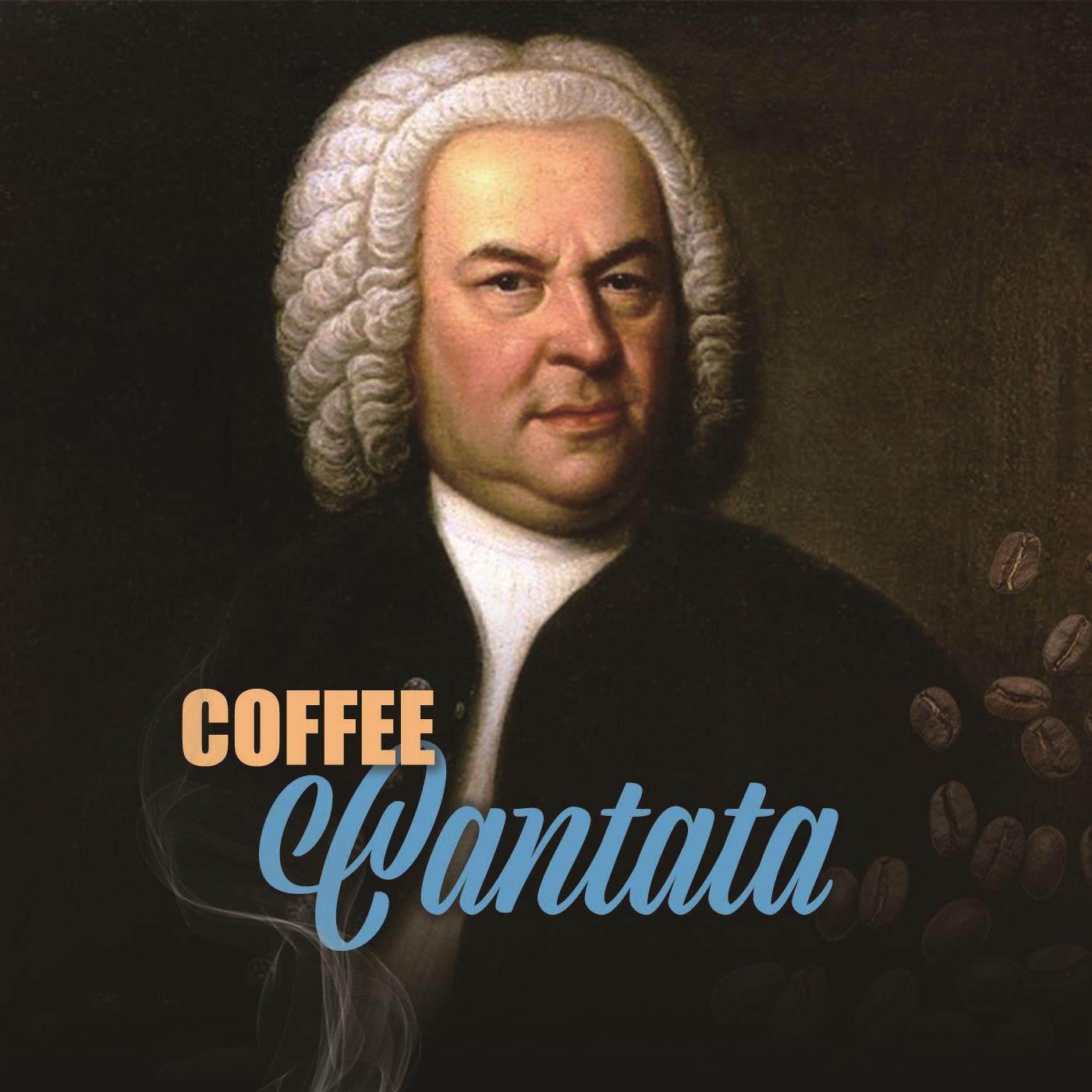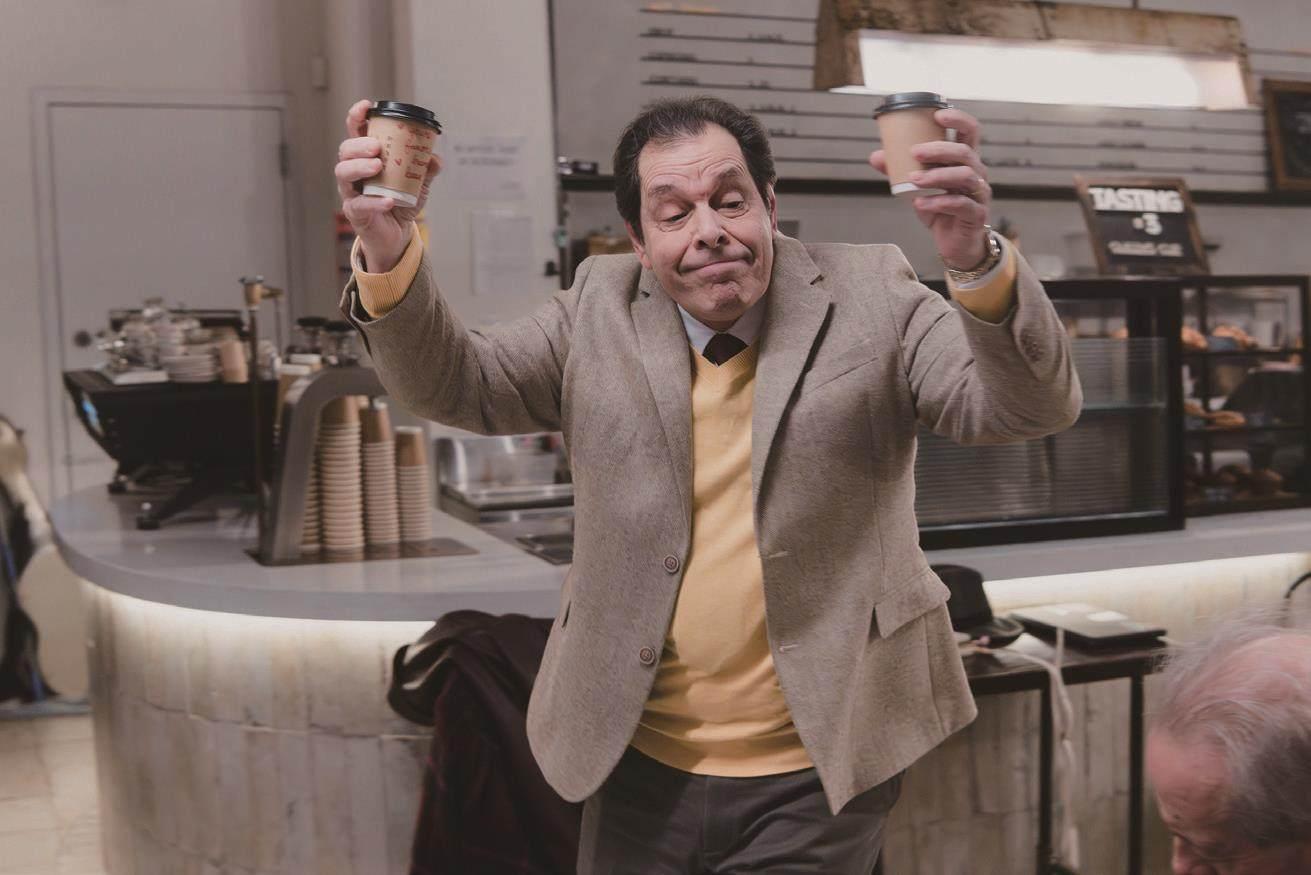艰巨的任务:把巴赫《咖啡清唱剧》磨成歌剧
司马勤
您曾在看歌剧时打瞌睡吗?我在纽约最钟爱的小歌剧团之一似乎找到了解决这个问题的诀窍:演出期间,何不找个借口为观众送上含有咖啡因的饮料?
当然,这个案例比较特别:(1)演出的作品是巴赫的《咖啡清唱剧》(Coffee Cantata);(2)整部作品时长只有半个小时;(3)现场歌剧院(On Site Opera)是个到处“游荡”的歌剧团,没有固定演出场所;(4)这场演出是在一家咖啡馆里举行。

很多事情酝酿许久。让我们先单一地溯源这个项目吧。我们早前已经讨论过巴赫究竟有没有创作过歌剧这个议题。传统音乐学界肯定会给出否定的观点,因为“受难曲”(巴赫声乐作品中最富有“歌剧性”的作品)这一体裁的基础是宗教主题,实质上是为教会所创作的。但是,去年11月在香港舞台上搬演的、具有戏剧元素的《圣约翰受难曲》(St. John Passion),却让事情变得复杂起来。
而《咖啡清唱剧》的出现,则让局面变得更为复杂。这部作品(创作年代大约是1732年到1735年之间)没有宗教意味,也不是为了教会所作。没有人可以确定其首演的年份与地点。但我们知道,巴赫除了在莱比锡圣托马斯教堂任职外,还在一家名叫齐默尔曼的咖啡馆领导过一个小乐团(乐团的创始人是同期作曲家泰勒曼)。
这部清唱剧可以说正是一杯泡沫多多的调制饮料。一开始,叙事者向观众介绍故事中的两位主角:父亲,以及嗜咖啡如命的女儿。父亲担心女儿喝太多咖啡,二人发生了争执,女儿唱出一首歌颂咖啡的咏叹调。父亲威胁女儿,如果她不戒掉咖啡,那么将切断她的经济来源,他甚至不允许她结婚。可是,女儿却警告所有她的爱慕者,想要追求她,就必须要接纳她对咖啡的嗜好。
以德国歌剧的普遍风格来衡量,这部作品相当滑稽。作品的正式曲名是《安静点,别讲话》(Schweigt stille, plaudert nicht),听上去非常严肃——但唱出这一句的并不是父亲而是叙述者,显然他是希望那些喝了不少咖啡的顾客停止喧哗——这部清唱剧把喝咖啡当成一件举足轻重的大事件。女儿把咖啡比作一千个热吻:要是戒掉它,她就会变成一只“干涸的山羊”。或者音乐学家们的看法是对的:其实这部作品跟歌剧无关,它只是个推销咖啡的广告。

然而,隐藏在文本之下的是一种有趣的社会动态。当年,像齐默尔曼咖啡馆这种地方是不允许女士进入的——除了观看演出或参加公开的活动以外。巴赫与编剧家兼诗人克里斯蒂安·弗里德里希·亨里奇(Christian Friedrich Henrici)利用女士可以参与咖啡馆活动的场合,巧妙地探讨两性之间角力的话题。
无论我们用什么标准来看,《咖啡清唱剧》都是一部喜歌剧,尽管它更像是幕间曲——位于更庞大、更严肃、寓意更“重要的”的作品幕休间的小品。众所周知,音乐学家与喜剧或社会活动没什么直接关系,我不肯定为什么他们抗拒重新定义《咖啡清唱剧》,是因为一个路德教会中德高望重的人物竟然挑战传统道德标准,还是因为这位大家都公认为缜密严格的作曲家会创作出一部那么有趣的作品?
你必须承认,要把那位看起来十分严肃、带着灰色假发的作曲家与《咖啡清唱剧》联系在一起,的确有点困难。我个人认为,全都是咖啡惹的祸。
现场歌剧院将这个制作的推广卖点定位为“沉浸式体验”——这个描述或者更适合于下午茶,尽管它成功地捕捉到这场演出独特的“风味”。最重要的是,歌剧院选择了一个货真价实的咖啡馆当演出场地——这家名为“Lost Draft”的咖啡店位于曼哈顿下城区,环境可谓合适之极。想光顾的顾客就算没有留意到大门口摆放着“私人活动,谢绝光临”的告示而误入其中,他们也不会觉得诧异。

在演出前,四位乐手(分别演奏小提琴、长笛、大提琴和吉他)已经坐在刚好位于大门入口附近的小桌边聊天。进来的顾客——他们很快就会变成“观众”——被安排坐在一列位于墙边的桌椅,大家一律面向咖啡吧台。要是有人试图坐在前面的小桌或是在吧台旁的高椅上,服务员很快就会把他请走。
为什么?答案很快就揭晓。贝尔纳德·赫尔库姆(Bernard Holcomb)饰演的叙述者——在这里,角色设定为咖啡师——站在吧台后演唱。当菲利普·科克里诺斯(Philip Kokorinos)饰演的父亲与克里斯汀·里昂斯(Christine Lyons)饰演的女儿在吧台前的椅子上坐定,演出正式開始。(剧透警告:咖啡师最终赢得了女儿的芳心。)
演出期间还穿插了三种咖啡的品尝环节:Moma Mina(来自尼加拉瓜,带有水果芬芳、味道浓郁的咖啡)、Kahawa Chungu(含有玉桂、豆蔻与丁香的低因咖啡)与“女王之杯”(Queens Cup,埃塞俄比亚咖啡与伯爵女王茶的混合饮料)。出演咖啡师的叙事者负责介绍,咖啡馆服务员把杯子送到每一位观众面前。因此,《咖啡清唱剧》中的“咖啡”部分把原来时长25分钟的“清唱剧”延长至45分钟的现场体验。
要是深层次思考一下,我们就会发现,这场演出刚好把最初的商业模式反了一反:在18世纪,只要顾客愿意点上一两杯咖啡,咖啡馆里的演出全部免费;而在今天,当你买了歌剧门票后,便可品尝到免费咖啡。极具现代自由度的处理手法也出现在缩小的乐队编制以及充满俚语的英文唱词中。父亲唱的第一句唱词是“要养大女儿,绝不是野餐”(注:“野餐”这个词的俚语寓意是“愉快的时间,轻松的工作”)。无论是乐队改编还是唱词翻译,都要归功于杰弗里·麦克唐纳(Geoffrey McDonald)。

导演莎拉·梅耶斯(Sarah Meyers)富有创意,她善用吧台前后极为狭窄的有限空间。麦克唐纳的歌词字幕也可以传送至每位观众的手机——每张桌子上更配有小小的手机支架,让演出环境与真实情况相吻合。但是,大部分时间我都不需要看手机,因为演员近在咫尺,咬字发音也十分到位。
自从去年2月整个制作问世以来,我不仅在音乐界与戏剧界看到了对这部作品的评论——这两者的关注都在情理之中,而且在饮食界的行业出版物上也看到了相关报道,评论家们对于场地的使用感到好奇。如果现场歌剧院的宗旨是要拓展新观众,那他们成绩斐然,简直超出预期。

尽管如此,我认为这个概念仍有不少可拓展的空间。只要找来相宜的餐饮合作伙伴,一个有进取心的歌剧院甚至可以编排出整个演出季——或者,如果他们真的很有野心,还能构建出一个涵盖吃喝玩乐的漫长夜晚。喝罢咖啡,观众可以品尝甜品并观看李·霍伊比(Lee Hoiby)的歌剧《祝你好胃口》(Bon Appetit):那是传奇厨神茱莉亚·切尔德(Julia Child)教人烤巧克力蛋糕的电视烹饪节目的歌剧版。最后,大家再喝点烈酒并欣赏亨利·莫利科內(Henry Mollicone)的歌剧《酒吧地板上的面孔》(The Face on the Barroom Floor):酒徒即席挥毫,以绘画抵偿欠下的账单。这几部歌剧都是时长30分钟左右。你甚至可以在同一个街区里就找到适合这三台剧目的不同场地。
只是我的一个念头而已……
Ever have trouble staying awake at the opera? I think one of my favorite little companies in New York has solved the problem: keep audiences caffeinated during the show.
Of course, it helped in this case that (1) the work in question is Bachs Coffee Cantata, (2) the show itself is only 30 minutes, (3) On Site Opera is a nomadic, free-range troupe with no central venue, and (4) they actually staged this production in a coffee house.

Theres a lot brewing here, so lets go back to the source (single origin). I know weve already discussed whether or not Bach wrote any operas. Conventional musicology offers a hard no, since the Passions (the most “operatic” of his vocal works) were based on religious themes and actually written for the church. But staging them in a theater with all the dramatic trimmings, as the St. John Passion was in Hong Kong last November, rather complicates things.
The Coffee Cantata makes it even murkier. The piece (written sometime between 1732 and 1735) is neither religious nor written with the church in mind. No one is sure exactly when or where it was first performed, but we do know that Bach, in addition to his musical duties at St. Thomas Church, also directed an ensemble originally founded by Telemann at Zimmermans Coffeehouse in Leipzig.
The piece itself is a rather frothy concoction. A Narrator introduces the audience to a Father wor- ried about his Daughters coffee consumption. The Daughter, amidst their arguments, sings a love aria to coffee. The Father threatens to cut her off financially and even forbids her to marry unless she gives up coffee, but the Daughter warns all her suitors that if they really want her, the coffee comes along.

Particularly given the standards of German opera, the show is quite charming. Once past the severity of its official title, Schweigt stille, plaudert nicht(“Be quiet, stop chattering”)—sung not by the Father but rather the Narrator to hush the caffeinated audience—the show makes coffee-drinking a high-stakes endeavor. The Daughter compares coffee to a thousand kisses; giving it up would turn her into “a shriveled-up goat.” Maybe the musicologists have a point: this isnt an opera, its a coffee commercial.
Lying beneath the text, though, is an intriguing social dynamic. At that time, coffeehouses like Zimmermans forbade woman from entering the premises—except during performances and public events. Bach and his librettist, the poet Christian Friedrich Henrici, turned one of the few moments that women could be in the audience into a musical discourse on gender politics.
By nearly any standards, the Coffee Cantata is a comic opera, if only a brief intermezzo to fit between the acts of larger, more serious—and therefore more“important”—works. Since musicologists are not exactly known for either comedy or social activism, Im not sure if their resistance came from disbelief that such a distinguished figure in the Lutheran establish- ment would challenge moral conventions, or that a composer of such disciplined intellectual rigor could write something so genuinely funny?
You have to admit, its rather hard to reconcile the work itself with the stern, gray-wigged composer in the portrait. Personally, I think it was the coffee.
***
On Site Opera called their production an “immersive experience”—a description probably more appropriate for tea, though it did capture the evenings general, um, flavor. The point was to stage the piece in a real café—this one was called the Lost Draft, in downtown Manhattan—in as natural a setting as possible. If potential customers didnt see the sign outside warning that the place was closed for a private event, very little wouldve suggested anything out of the ordinary.

Before the show, a quartet of musicians (violin,flute, cello and guitar) were already sitting and chatting around a table near the entrance. Customers—soon to be audience members—were seated at in a row of tables near the side wall facing the bar. Anyone trying to sit at the bar or the table in front was quickly ushered away.
The reason soon became obvious when the Narrator (Bernard Holcomb)—or in this case, the Barista—calls people to attention from behind the bar. Once the Father (Philip Kokorinos) and Daughter (Christine Lyons) took their seats in front, the show was underway. (Spoiler alert: in this version, the Barista finally gets the girl.)
Interspersed during the performance were tastings of three different beverages: Moma Mina (a fruity, full-bodied coffee of Nicaraguan origin), Kahawa Chungu (a decaffeinated coffee with hints of cinnamon, cardamon and clove) and the Queens Cup (a mix of Ethiopian coffee with Queen of Earl tea), each introduced by the Barista and served by the cafés real baristas. The “coffee” portion of the evening expanded the “cantata” from 25 minutes of music to a 45-minute experience.
The presentation, if you think about it, was a quirky inverse of the original business model: In the 1700s, the performance wouldve been free for the price of a coffee or two; today, the coffee was free with the purchase of a concert ticket. Modern liberties also surfaced both in the clever reduction of the score and a highly vernacular English translation of the text (the Fathers first line was rendered as “Raising daughters in no picnic”), both of which were credited to Geoffrey McDonald.
Sarah Meyerss inventive staging made efficient use of limited space both in front of and behind the bar. McDonalds translation was streamable on mobile phones—phone racks on every table being yet another component of the shows realistic setting—but remained mostly unneeded, given the fine articulation and close proximity of the cast.


Since this production appeared last February, Ive seen reviews not only in music and theatre outlets—both of which would be expected—but also in food and beverage publications, which were intrigued by the creative use of the venues. If On Site Operas goal was to reach new audiences, the company outdid itself.
Still, though, I think the idea has plenty of room to grow. With the right restaurant partners, an enterprising opera company could plan a full season—or if theyre really ambitious, a long night out. After cof- fee, audiences could head for dessert with Lee Hoibys Bon Appetit (an operatic setting of a Julia Child cooking show on how to bake a chocolate cake), then end with drinks at Henry Mollicones The Face on the Barroom Floor (where a customer pays his bar tab by painting a womans face on the premises). Each opera is about 30 minutes long, and in the right neighborhood you could probably find three suitable venues on the same block.
Just a thought….


